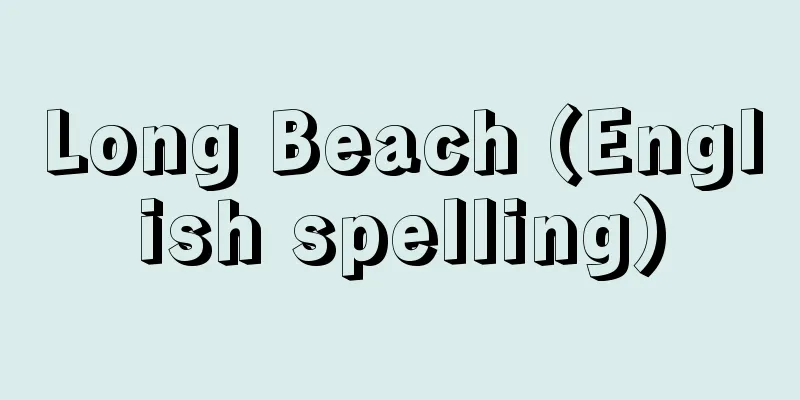Health education

|
Health education or hygiene education is a general term for educational activities that aim to establish healthy lives from now until the future, deepen the scientific understanding necessary to achieve this, and acquire the attitudes and abilities to practice healthy lifestyle behavior. The term has been used in the United States since around 1919, and became established in Japan with the reform of the Japanese education system implemented after World War II. The Ministry of Education (now the Ministry of Education, Culture, Sports, Science and Technology) called it health education, while the Ministry of Health and Welfare (now the Ministry of Health, Labor and Welfare) called it hygiene education. There was a time when a proposal was made to unify the translation of both terms under the term hygiene education, but later the Ministry of Education began to call it hygiene education. Therefore, the terms hygiene education are used in the field of public health, and health education or hygiene education are used in the field of school education. [Yutaka Sato] Health education in schoolsIn Japan, it was imposed on the school system in 1872 (Meiji 5) under the name of health care, and Genzui Sugita's Kenzengaku (1867) was used as a teacher's book. After that, it was taught in science and home economics classes in elementary schools, and in junior high schools it was sometimes taught as menstrual hygiene in natural history classes. In the educational reforms following the Second World War, health education in the broad sense has been positioned as an essential educational activity for promoting school health along with health management in the entire field of school education. Health education in the narrow sense encompasses health guidance and health studies, but in kindergartens and the lower grades of elementary school, the focus is on health guidance aimed at forming good habits, while in the upper grades of elementary school, health studies are added. Furthermore, health studies are implemented in the subject of health and physical education in middle and high schools, and at university, one credit is taken as health theory. In particular, in order to raise health awareness, there is a connection with science, home economics, and social studies, and the curriculum guidelines have been revised many times to change the specific content areas. Article 1 of the Fundamental Law of Education states that the purpose of education is "to perfect the personality and to foster citizens who are healthy in body and mind... as builders of a peaceful nation and society." This shows that health education is not simply about building muscular bodies with fighting ability and athletic aptitude, as was the case with physical fitness training during the militarist era, but about cultivating healthy individuals who can control themselves and aim for the health, happiness, and peace of individuals and society. Therefore, health education in schools is not enough to simply acquire health-centered knowledge in school subjects; it is necessary to develop health knowledge, attitudes, and practices into an integrated ability that is inseparable in the development process in the relationship between the individual, family, school, and society. We owe a great deal to school education for these basic educations. [Yutaka Sato] Health education in societyThe World Health Organization (WHO) was founded in 1946 and proclaimed its Charter. The main points of this Charter are the desire to establish health as one world, rather than relying on the egoism of a single country. In it, it states that "health is not merely the absence of disease or injury, but a state of physical, mental and social well-being," and that "the establishment of health is the most important duty of all nations, and health is an innate right that must be attained by all people, regardless of their social conditions, political beliefs, religious distinctions, race, etc." This shows that health as a fundamental human right is not something that is given to us by others, but something that we must earn ourselves, and that the various conditions that support our actions to achieve this should be developed under the responsibility of the nation. Another characteristic is that it regards health as a concept of life. However, the idea of interpreting the formation of health simply in terms of the three conditions of etiology, host, and environment, and of understanding the WHO's definition of health as "simply the state of being free from disease," should be revised. Rather, it would be more progressive to consider health in terms of the three conditions of subject, environment, and lifestyle behavior, and as a dynamic interrelationship between these three. Therefore, a positive attitude is necessary to create good conditions by accurately grasping the changing conditions and interrelationships of the subject and the environment, based on the past and present conditions, and thus to establish healthy living behavior. When considering human characteristics from a physiological standpoint, (1) they are an open system, (2) they have a closed circulatory system, (3) they function as an adaptive control system, (4) they are an organic system that is permeated by wholeness, and (5) they are mortal. Based on these foundations, it is appropriate to think of human health not only as an individual condition, but also to recognize the human body on the premise of a social existence, and then to consider the functions of the body. Moreover, it is necessary to consider health in a series of processes based on growth, development, growth, and aging, and to urgently ask how such habits and attitudes can be formed through education. While medicine is a field that studies humans from the perspective of disease, hygiene is a field that studies humans from the perspective of health. If environmental hygiene is the field that studies hygiene from the outside that surrounds humans, educational hygiene is the field that studies it from the inside. There is also the idea of lifelong education, where education itself is considered within the field of hygiene, and health education is made effective. [Yutaka Sato] "Humans and Health" edited by Akira Koizumi and Tsuneo Tanaka (1971, Taishukan Shoten) " "Historical Nature of Humans" by Nobuo Samori (1965, Rokugatsusha) [Reference items] | | | | | |Source: Shogakukan Encyclopedia Nipponica About Encyclopedia Nipponica Information | Legend |
|
現在―将来にわたる健康生活の確立を目標とし、それに必要な科学的認識を深め、健康的な生活行動が実践できる態度・能力を身につけるための教育活動を総称して、健康教育、保健教育という。アメリカでは1919年ころからこのことばが用いられ、第二次世界大戦後に実施された日本の学制改革に伴って、わが国に定着した。文部省(現文部科学省)側では健康教育とよび、厚生省(現厚生労働省)側では衛生教育とよんだ。両者を保健教育という訳語で統一する提案が出された時期もあったが、その後、文部省側が保健教育とよぶようになった。したがって、公衆衛生分野では衛生教育、学校教育分野では保健教育、健康教育ということばが用いられている。 [佐藤 裕] 学校における健康教育わが国では1872年(明治5)から養生法という名称で学校制度のなかに課せられ、教師用書として杉田玄瑞(げんずい)の『健全学』(1867)が用いられた。その後、小学校では理科、家事科のなかで取り扱われ、中学校では博物のなかの生理衛生として取り扱われていたこともある。 第二次世界大戦後の教育改革では、広義の健康教育は、学校教育の場全体として保健管理とともに学校保健の推進に不可欠な教育活動として位置づけられている。狭義の健康教育は保健指導と保健学習を包括しているが、幼稚園や小学校低学年では習慣形成を目的とする保健指導が中心になり、小学校高学年では保健学習が付加される。さらに、中・高等学校では保健体育科という教科のなかで保健学習が実施され、大学では保健理論として1単位を履習することになっている。とくに保健認識を高めるためには、理科、家庭科、社会科との関連もあり、学習指導要領でも具体的内容領域についてたび重なる改訂が行われてきている。 教育基本法第1条、教育の目的には、「教育は、人格の完成をめざし、平和的な国家及び社会の形成者として……心身ともに健康な国民の育成を期して行われなければならない」とある。これは、健康教育が軍国主義時代の体力づくりのように、単に筋骨隆々となり闘争力や運動適性のある人間を形成するのでなく、個人や社会の健康、幸福、平和を目ざして自己操作できる健全な人間形成をすることを示す。したがって、学校における健康教育は、教科における保健中心の知識の獲得だけでは不十分であり、個人―家庭―学校―社会の関連における発展過程のなかで健康の知識―態度―実践が不離一体となって統合された能力となる必要がある。これらの基礎教育については学校教育に負うところが大きい。 [佐藤 裕] 社会における健康教育1946年にWHO(世界保健機関World Health Organization)が結成され、憲章を宣言している。この骨子には、一国のエゴイズムよりも世界を一つとしてその健康を確立していこうという願いがある。このなかで「健康とは単に疾病や傷害がないというだけにとどまらず、身体的にも精神的にも、また社会的にも安寧な状態をいう」と述べ、「この健康の確立を図ることは、すべての国にとってもっとも大切な義務であり、かつ健康はあらゆる人々にとってその社会的な条件、政治的信条、宗教的区別、人種などの関(かか)わりなく達成されなければならない生まれながらの権利である」と述べている。これは、基本的人権としての健康は他から与えられるものでなく、自らかちとるものであり、そのための行動を支えるさまざまな条件が国家的責任において整備されるべきものであることを示す。また健康を生活概念としてとらえた点に特徴がある。しかし、健康の成立を病因、宿主、環境という三つの条件から単純に解釈し、WHOの健康の定義を「単に健康を病気でない状態」としてだけとらえる考え方は修正されるべきで、むしろ、主体、環境、生活行動の三つの条件から考え、これら三つの動的な相互関係として、健康を考えるほうが進歩的である。 したがって、過去と現在の状態を踏まえ、変化する主体や環境の条件や相互関係を的確にとらえて、よい状態をつくりだしていく積極的態度が必要であり、このことにより健康的な生活行動が確立されていく。生理的な立場から人間の特性を考えると、(1)開放系としての存在である、(2)閉鎖循環系機能をもつ、(3)適応制御系として成立する、(4)有機系で全体性に貫かれている、(5)死に至る存在である、ことがあげられる。これらの基盤にたって人間の健康をただ個別な条件としてだけ考えるのでなく、社会的存在を前提として人体の認識が成立し、そのうえで生体機能を考えることが妥当である。しかもそれは発育、発達、成長、老化を踏まえた一連の過程における健康を考え、さらにそうした習慣、態度をどのように教育によって構成していくかが切実に問われなければならない。 人間を疾病の側面から眺め研究した学問が医学であるのに対し、健康の側面から眺め研究した学問が衛生学である。また衛生学を人間を取り巻く外側から考究するのが環境衛生学とすれば、内側から考究するのが教育衛生学であり、教育学そのものを衛生学の範疇(はんちゅう)で考え健康教育を効果的に作用させるという生涯教育的な発想もある。 [佐藤 裕] 『小泉明・田中恒男編著『人間と健康』(1971・大修館書店)』▽『佐守信男著『人間の歴史的自然』(1965・六月社)』 [参照項目] | | | | | |出典 小学館 日本大百科全書(ニッポニカ)日本大百科全書(ニッポニカ)について 情報 | 凡例 |
>>: Health management - kenkou kanri
Recommend
Crop - Sakumotsu
A plant is one whose propagation and growth are p...
"Azuma Kagami" - Azuma Kagami
…Also written as Toukagami. A history book compil...
Estonian - Estonia (English spelling) Eesti Vabariigi
It is one of the Baltic-Finnic languages of the...
Uterine rupture
What is the disease? Pregnant uterus Body ( Great...
Komochi [village] - Komochi
A village in Kitagunma County, central Gunma Prefe...
Ippitsusaibuncho - Ippitsusaibuncho
Date of birth and death unknown. Ukiyo-e artist o...
Desiderio
...Customs and names also rapidly became Germanic...
Cytokinin - Saikainin (English spelling)
A group of plant hormones. A general term for a g...
Soft corn
...The stems and leaves are used as animal feed. ...
Anna Harriet Leonowens
1831‐1914 An English royal English teacher invited...
Plum wine - Umeshu
It is an ancient Japanese alcoholic drink made by...
Reply
〘noun〙① A receipt. A receipt. In the Nara and Heia...
Jaisalmer (English spelling)
An oasis city in the western tip of Rajasthan stat...
United Kingdom of Aragon - Aragon
The Kingdom of Aragon in the medieval Iberian Peni...
Banknotes - Ginkouken (English spelling) bank-note
Today's typical cash currency, legally a self...









